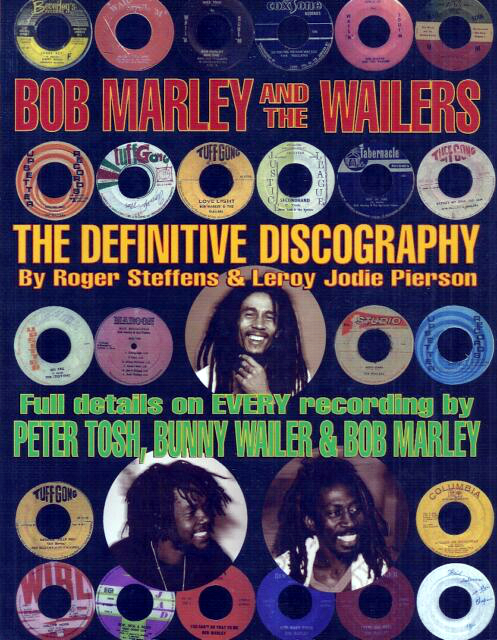
 |
|
BOB MARLEY AND THE WAILERS: THE DEFINITIVE DISCOGRAPHY
by ROGER STEFFENS & LEROY JODE PIERSON Order from chaos By Rick Hines, Sept. 3, 2022 Before Chris Blackwell and Island Records made The Wailers (and Bob Marley) world renowned artists, The Wailers had a long catalog of music recorded and released in Jamaica, mainly as 45s. Their music was recorded for a variety of labels that often put out incorrect information on the record label (song title, artist name, and songwriter often varied from release to release) or used blank or generic labels. Often, the singles were released in batches of a couple hundred and not reprinted. This led to The Wailers recording popular songs over and over to keep them in print. Add to this the chaos you get from dealing with a bunch of stoned Jamaican producers and musicians, and you have the miss-mash that is the early Wailers catalog. Not long ago, I tried wading into The Wailers pre-Island discography but was immediately overwhelmed by all this contradictory and incomplete information. I was surprised to find little about The Wailers early recording years on the internet. Without this book, I would never have been able to make heads or tails of it all. Once the world started paying attention, The Wailers and Bob Marley were well documented. This book has that, but it also takes us into the decade pre-1972 when The Wailers were riding a creative wave that ruled the Jamaican airwaves. With this book, I can now see (or hear) how The Wailers progressed from a Ska band with R&B roots through Rocksteady to the ground-breaking Reggae standard bearers they became. Arranged by recording date (information is often approximate due to lost or unkept studio notes), this tells who played on what, who produced, and at what studio, as well as listing all the different releases for each song: singles, albums, 12" versions, etc. Alternate titles and variations are noted along with miscellaneous information that helps untangle the history. How many versions of "Maga Dog" did Peter Tosh record? What did Chris Blackwell add to the Jamaican recordings he got from Bob Marley? Did Bunny Wailer re-record "Dreamland" or just keep using the same recording over and over? What recordings did early Wailers like Junior Braithwaite or Beverly Kelso sing on? What were Marley and Tosh doing when Bunny was serving his jail sentence for weed? Is "Man to Man" the same song as "Who the Cap Fit"? How does Rita Marley fit into all this? So many questions are finally answered here or at least given some context. Much like what happened with Jimi Hendrix, when Bob Marley passed away record labels looked for ways to fill the public appetite for more Marley. They often chose to overdub new musical parts over existing songs to make them sound more appealing to contemporary listeners, then re-release them. At the extreme, some informal and rehearsal recordings were stripped of everything but Marley's vocal and totally re-done. Not only does this book cover the initial song recording facts, it details post-mortem overdubbing and helps separate the true Bob Marley takes from the bastardized later releases. Aside from all this studio information, the book incorporates all the official live albums along with a select choice of bootlegs, promotional releases, and notable concert appearances. Since the book came out in 2005, much of the live material has been released officially (or expanded) and is now readily available. The authors give an overview of The Wailers history, but this is for record/music collectors, not biographers. Most of this music is available somewhere, but without a road map like this book, it's almost impossible to know what you are even looking for. In summary, this is one of the best discographies I have read, and the amount of pencil notations in the page borders will attest to its usefulness. |
All work displayed on this page © 2022 Rick Hines.
Material may not be used without the artist's written permission.